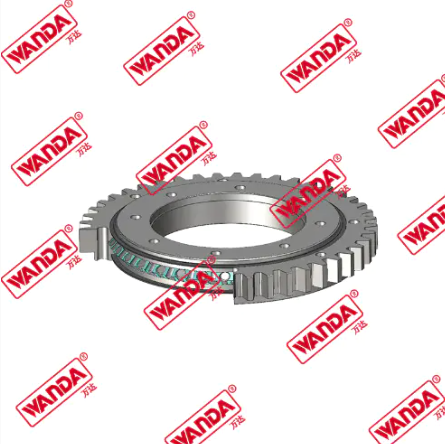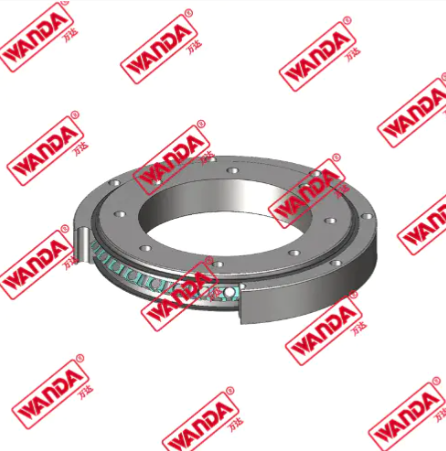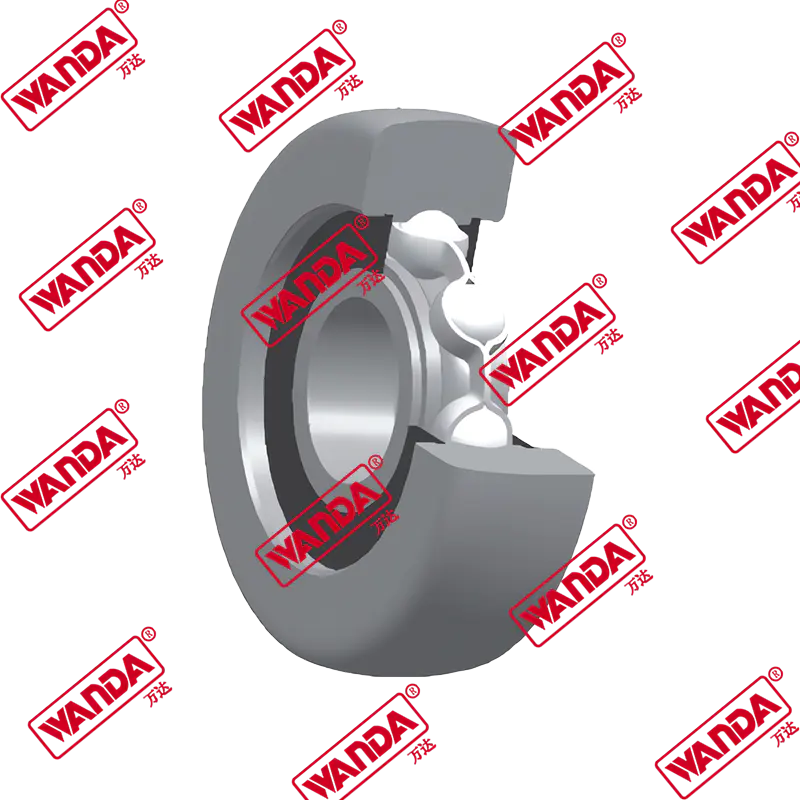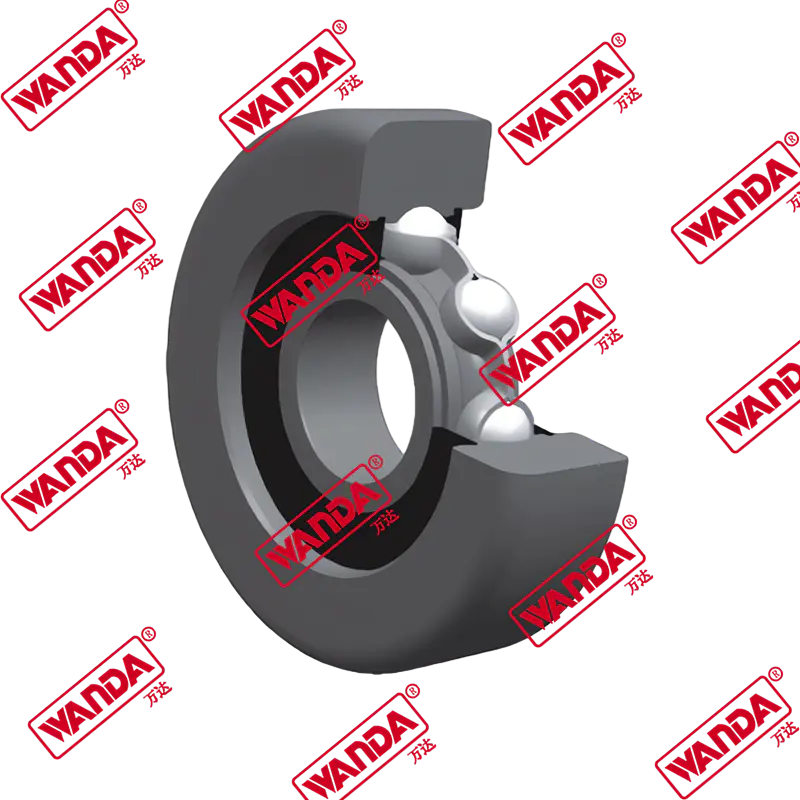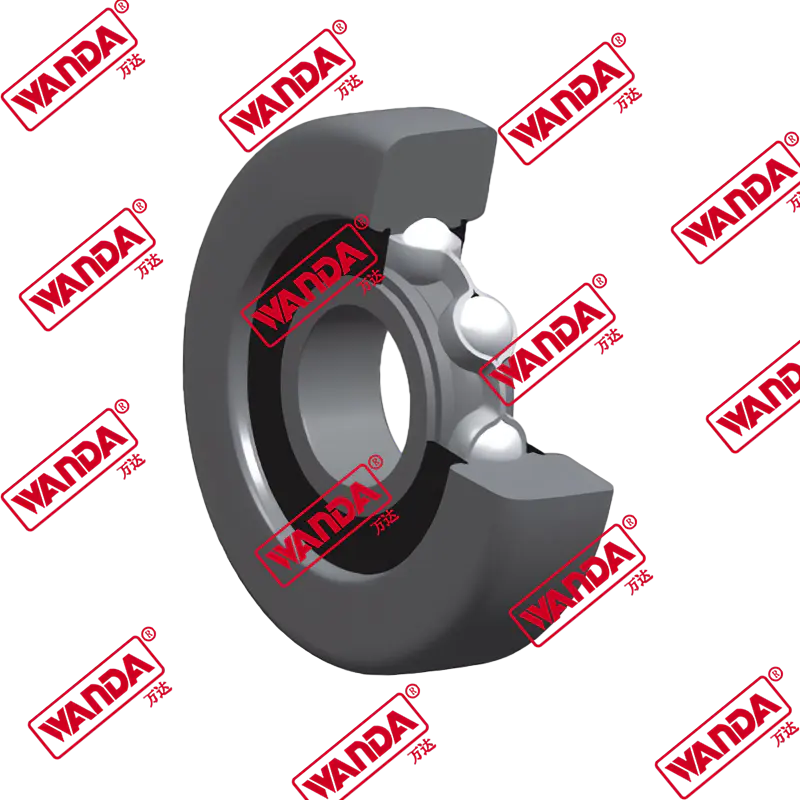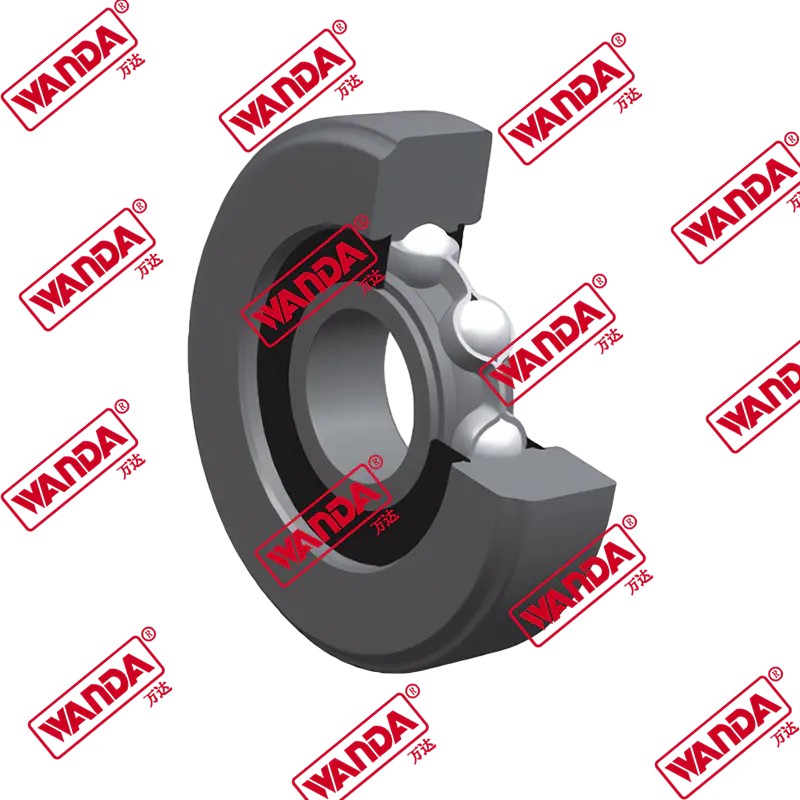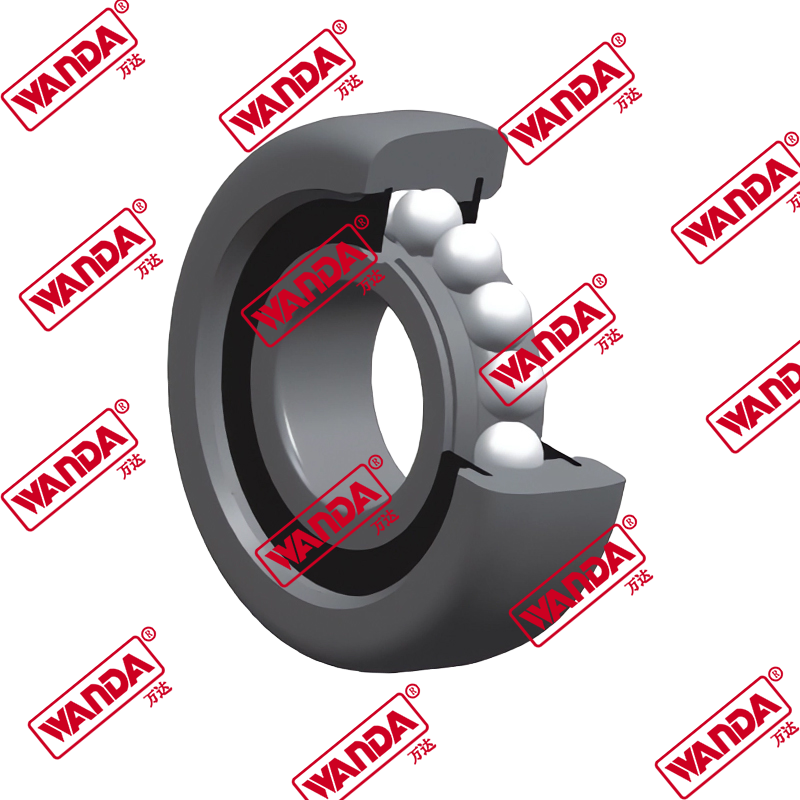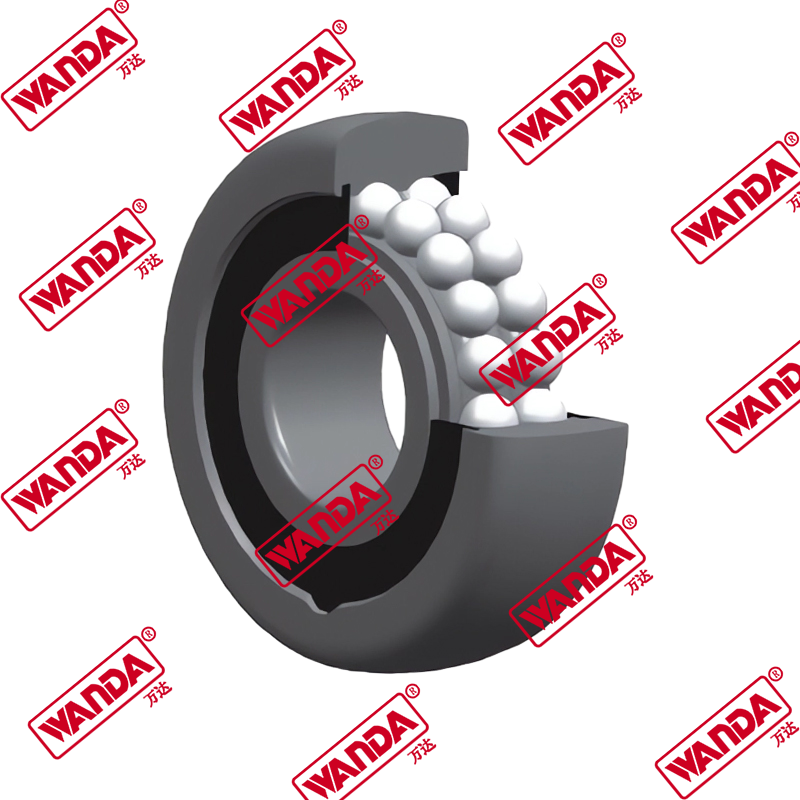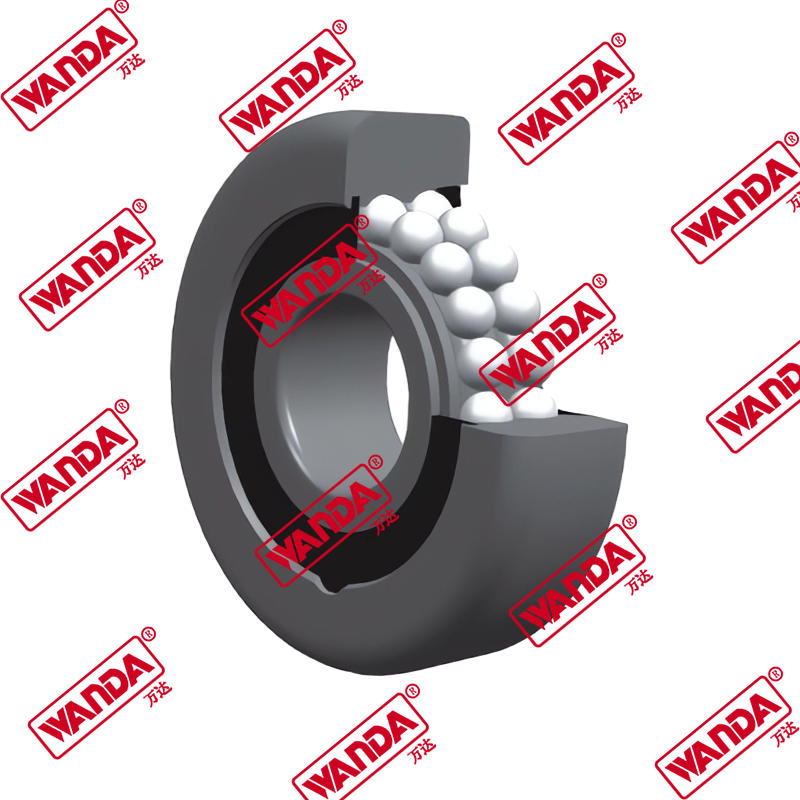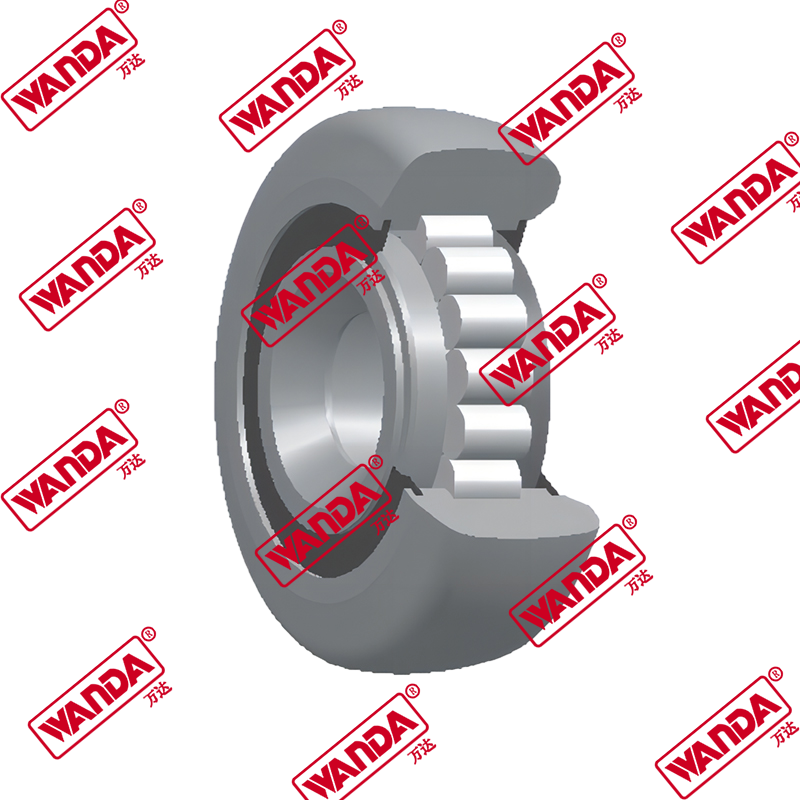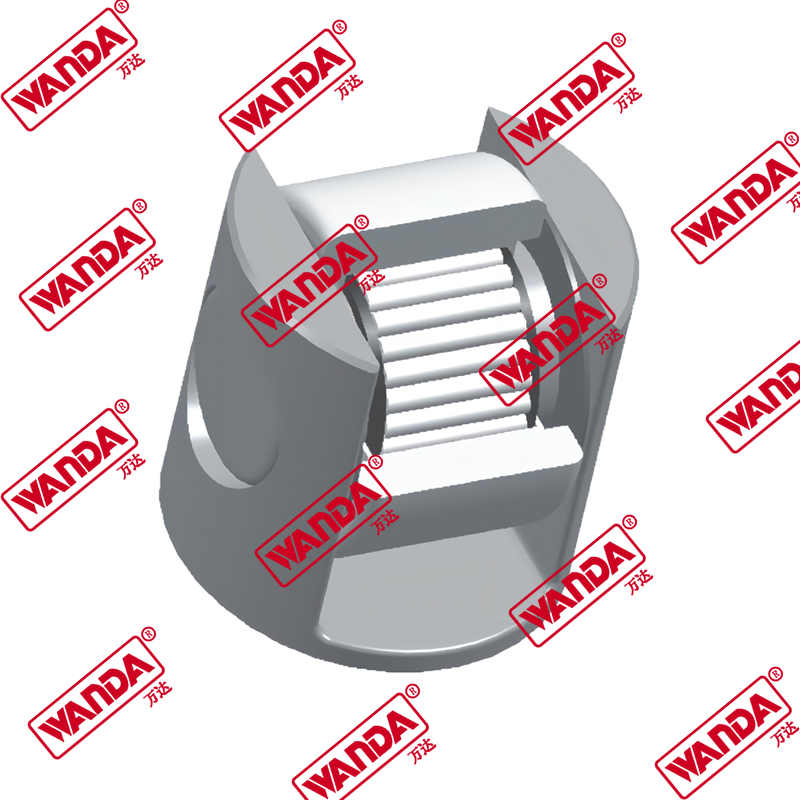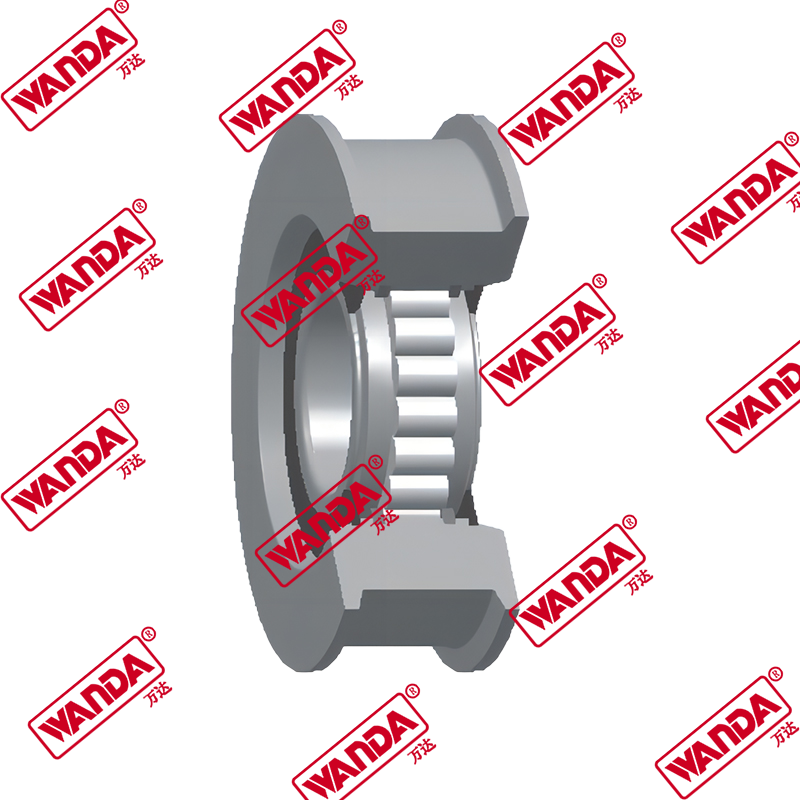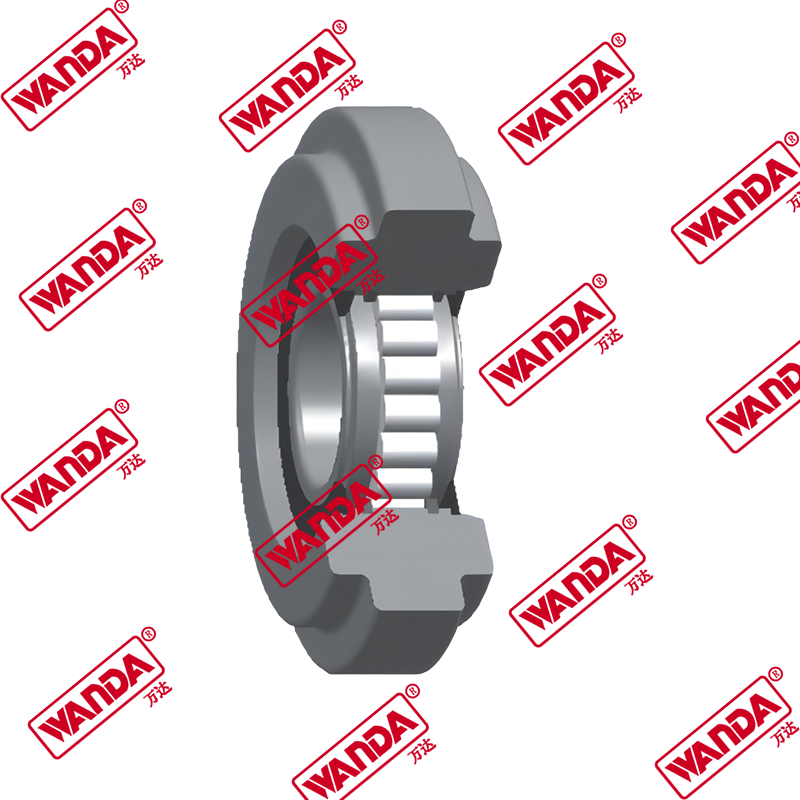As modern mechanical equipment continues to develop towards high precision, high load and complex motion, the performance of slewing bearings, as key components for achieving rotation and positioning, directly affects the reliability and efficiency of the entire equipment. Especially in the fields of industrial robots, wind power generation, aerospace and heavy machinery, higher requirements are placed on the load-bearing capacity of slewing bearings.
As an advanced type of slewing bearing, Crossed roller slewing ring internal gear has achieved excellent load-bearing capacity and high rigidity with its unique structural design, becoming the preferred solution for modern high-performance machinery. This article will deeply analyze the advantages of this structure in terms of load-bearing capacity, revealing its technical principles and actual performance.
1. Working principle and structural advantages of Crossed roller structure
1.1 What is Crossed roller?
Crossed roller is a specially arranged roller structure, which means that the rollers are arranged in a cross manner in the raceway of the slewing bearing, that is, the adjacent rollers are arranged perpendicular to each other. This layout enables the rollers to withstand radial, axial and overturning forces in one plane at the same time.
Traditional roller bearings are generally arranged in a single direction, and the force is mainly concentrated in a single direction, making it difficult to evenly distribute the load. The cross roller structure achieves multi-directional dispersion of force by alternating the direction of the rollers, thereby improving the load balance and overall stiffness.
1.2 Load innovation brought by the cross arrangement
The core advantages of the cross arrangement are:
Multi-directional force capacity: Each roller can withstand vertical loads, so that the slewing bearing has a combined load capacity of radial loads and axial loads.
Strengthened force surface: Compared with traditional roller bearings, the cross arrangement increases the contact area and improves the uniformity of load distribution.
Enhanced rigidity: Because the rollers are perpendicular to each other, the structure's ability to resist deformation is greatly improved, reducing the runout and vibration during operation.
This design enables the Crossed roller structure to have a higher load capacity and better dynamic performance under the same size conditions.
1.3 Precision coordination of the internal tooth structure
The internal tooth type slewing bearing integrates the gear structure into the inner ring, taking into account both the transmission and support functions. The internal teeth cooperate with the drive device to realize the transmission of rotary power, and the tooth surface and roller support work synchronously to enhance the stability of the overall structure.
The design of the internal tooth structure emphasizes:
The gear precision matches the roller arrangement to ensure the stability and efficiency of the transmission process.
The tooth surface strength and the roller load bearing capacity are improved synergistically to improve the impact resistance and wear resistance of the system.
The internal tooth type slewing bearing structure simplifies the mechanical system, reduces the transmission chain, and improves the overall reliability.
2. The core mechanism for improving the load capacity
2.1 The force dispersion principle of the crossed roller
The biggest advantage of the crossed roller structure is the three-dimensional dispersion of the roller force:
Radial load: The roller shares the load perpendicular to the direction of the rotation axis, supporting the weight and external pressure of the equipment.
Axial load: The load in the direction perpendicular to the axis is effectively borne by the cross-arranged rollers to ensure the stability of the equipment in the forward and backward push and pull.
Overturning moment: Because the roller directions cross each other, it can resist the overturning force on the equipment and prevent bearing deformation or early failure.
This multi-directional force distribution makes the Crossed roller slewing bearing significantly improve its load-bearing capacity compared to the traditional single-direction roller structure, while ensuring structural rigidity.
2.2 High contact ratio design
The contact ratio refers to the number and area of contact between the roller and the raceway, which directly affects the load-bearing capacity and transmission stability. The Crossed roller structure increases the contact ratio of the roller and the raceway through cross arrangement:
More contact points share the load and reduce single-point stress concentration.
Increasing the contact area reduces the pressure per unit area and improves wear resistance.
Improve transmission stability and reduce the impact load of gears and rollers.
The design optimizes the roller length and raceway shape to achieve the best contact angle and balanced load distribution.
2.3 Structural rigidity performance under multi-point support
Multi-point support not only improves the load-bearing capacity, but also greatly improves the rigidity of the support. The advantages brought by the increase in rigidity include:
Reduce mechanical deformation and ensure positioning accuracy during equipment operation.
Reduce vibration and impact and extend mechanical life.
Increase dynamic response speed to meet the requirements of modern industrial automation for fast and precise movements.
The joint improvement of rigidity and load-bearing capacity is an important reason why the Crossed roller structure has become the first choice in the field of high-end machinery.
3. Actual performance and comparative analysis
3.1 Comparison of load-bearing with three-row roller structure
The traditional three-row roller slewing bearing has certain advantages in load-bearing capacity, but it has limitations compared with the cross roller structure:
The force direction is single, resulting in weak axial load bearing capacity.
The contact area is limited, the unit pressure is large, and the service life is affected.
The structure volume is large and the space utilization rate is not high.
The Crossed roller structure effectively disperses the load through cross arrangement, improves the load limit, and achieves a smaller volume with greater force.
3.2 Maintaining high load-bearing performance in a compact structure
Industrial equipment is increasingly pursuing compact design. The Crossed roller internal gear slewing bearing meets this trend with its high load density:
Compact structure, saving installation space.
The load-bearing capacity is not reduced, and small volume and high strength are achieved.
The internal gear transmission simplifies the equipment transmission system and improves the integration.
This high load-bearing and high space utilization feature is extremely competitive in the fields of robot joints, precision machine tools, medical equipment, etc.
3.3 Synergistic improvement between long life and stability
The improvement of load-bearing capacity is not only reflected in the instantaneous bearing capacity, but more importantly, it extends the working life of the slewing bearing:
Optimize the rolling path design to reduce local stress concentration and reduce fatigue risk.
High-precision manufacturing process ensures smooth meshing between rollers and raceways and reduces wear.
Reasonable lubrication and sealing ensure long-term stable operation.
Combining the above factors, the Crossed roller internal gear slewing bearing can maintain long-term stable operation under high loads, reducing maintenance frequency and downtime costs.
4. Future potential in technological evolution
4.1 The boost of material technology to the load limit
The application of new materials makes it possible to improve the load-bearing capacity:
High-strength alloy steel improves the wear resistance and fatigue resistance of gears and rollers.
Ceramic rollers reduce rolling resistance, improve rigidity and life.
Advanced surface treatment technologies, such as coating and heat treatment, enhance corrosion resistance and wear resistance.
The development of material technology enables Crossed roller slewing bearings to maintain excellent performance in more extreme environments.
4.2 Integration of intelligent monitoring and load prediction systems
With the advancement of Industry 4.0, intelligent sensing technology and AI algorithms are changing the maintenance methods of traditional mechanical components:
Built-in sensors monitor load, temperature and vibration to grasp the operating status in real time.
Data analysis and predictive maintenance to prevent overload and failure.
Dynamically adjust load distribution, optimize load status and extend service life.
Intelligent technology will make Crossed roller slewing bearings more efficient and reliable.
4.3 Structural changes for larger sizes and more complex movements
Future high-end equipment will require larger sizes and more complex movements for slewing bearings:
Modular design for easy combination and maintenance.
Reconfigurable rotation system to adapt to multiple working modes.
Integrate more functions, such as positioning, braking, etc.
These innovations will further expand the application areas of Crossed roller internal gear slewing bearings to meet diverse industrial needs.
Conclusion
Crossed roller slewing ring internal gear, with its unique cross roller structure and internal gear design, significantly improves the load-bearing capacity and structural rigidity, meeting the stringent requirements of modern machinery for high-performance slewing bearings. From the core load-bearing mechanism to the continuous integration of materials and intelligent technology, its technical advantages continue to expand, becoming the key support for many high-precision equipment.
In the future, with the advancement of material technology and intelligent manufacturing, Crossed roller internal gear slewing bearings will play an important role in a wider range of industrial fields and promote mechanical performance to a new level.

